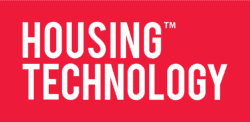How environmental monitoring is transforming tenants’ safety & well-being
For social landlords, ensuring tenant safety has always been a core responsibility but the way it is measured and enforced is changing. With the introduction of Tenant Satisfaction Measures (TSMs) and stricter regulations under the Social Housing Act 2023, housing providers must do more than meet minimum compliance standards; they must demonstrate real improvements in their tenants’ living conditions.
From reactive to proactive housing management
Historically, safety has been assessed through routine property inspections, residents’ complaints and periodic compliance checks. However, these traditional approaches often miss hidden risks, such as the early signs of damp and mould, fluctuating indoor temperatures that contribute to fuel poverty or poor air quality affecting tenants’ health. Addressing these challenges reactively can be expensive and inefficient, leading to missed opportunities for early interventions.
Technology is offering a new way forward. Environmental monitoring, powered by connected sensors and smart data analytics, is changing the way housing providers manage their properties. These systems provide real-time insights into conditions inside homes, allowing housing providers to identify risks before they escalate into serious problems. By continuously tracking temperature, humidity and air quality, housing teams can proactively address problems such as damp and mould before tenants even need to raise their concerns.
The growing role of environmental monitoring
The importance of this shift cannot be overstated. Awaab’s Law, introduced following the tragic death of two-year-old Awaab Ishak due to prolonged exposure to mould in his home, has reinforced the urgency of tackling poor housing conditions. Under the new legislation, housing providers must act on damp and mould complaints within strict timeframes.
But waiting for tenants’ reports isn’t enough; by the time a problem is visible, the damage may already be done. Environmental sensors provide a solution, continuously monitoring conditions and flagging problems the moment they arise, helping housing providers comply with new legal requirements while improving tenants’ safety.
Tackling damp & mould before the crisis point
For a housing officer managing 100s or even 1000s of properties, knowing where to focus their attention can be overwhelming. Without real-time data, resources are often deployed inefficiently, with teams perhaps responding to the loudest complaints rather than the most urgent problems.
Environmental monitoring creates a clearer picture, allowing housing providers to prioritise their interventions based on actual need rather than assumptions. If a sensor persistently detects high humidity in a property, the housing team can investigate ventilation or insulation problems before mould develops rather than relying on annual inspections or resident reports.
Beyond damp and mould, these sensors also help address another major concern in social housing: fuel poverty. With millions of UK households struggling to afford heating, many tenants reduce their energy usage to dangerous levels, leading to cold, damp homes that negatively impact health.
Smart sensors can alert housing providers when indoor temperatures drop to unsafe levels, enabling them to intervene, whether through improved insulation, advice on heating usage or directing tenants to financial support. By taking a proactive approach, housing providers can ensure their most vulnerable tenants remain safe and warm.
Data-driven compliance – Meeting regulatory expectations efficiently
Crucially, environmental monitoring solutions integrate with existing housing management systems, streamlining compliance tracking and reducing administrative burdens. Instead of relying on manual data collection, housing providers can access real-time dashboards that show which properties are at risk, when interventions are needed and whether previous maintenance efforts have been effective. This not only improves efficiency but also ensures housing providers have the evidence needed to meet their TSM reporting obligations.
Technology also plays a role in fostering better communications and trust between housing providers and their tenants. Many residents, especially those from vulnerable groups, are reluctant to report problems due to concerns about being ignored or facing disruption. When housing providers use data-driven monitoring to identify risks early, it shifts the dynamic because housing teams can proactively engage with their tenants, demonstrating that their well-being is a priority. Some smart systems even offer tenant-facing apps, allowing residents to check their home’s environmental data and receive tailored advice, giving them a greater sense of control.
The future of housing management – Smarter, safer & more sustainable
The benefits of environmental monitoring extend beyond individual homes. When deployed at scale, this data can reveal patterns across entire portfolios, helping housing providers make strategic decisions about long-term maintenance and investment.
For example, if multiple properties in a block have similar humidity problems, it may indicate a broader problem with insulation or ventilation that needs to be addressed at a structural level. This kind of insight enables housing providers to move away from reactive, case-by-case fixes and towards more sustainable, portfolio-wide improvements.
Several housing providers are already adopting these technologies with impressive results. FireAngel’s Home Environment Gateway, for example, integrates environmental sensors with fire and CO safety networks, providing housing providers with a comprehensive view of residents’ safety. Through Zigbee-enabled connectivity, multiple sensors can be installed within a home, offering granular insights into indoor conditions without requiring manual checks. Housing teams using this technology have reported faster response times to risks, improved tenant satisfaction and reduced long-term maintenance costs.
As the social housing sector continues to evolve, the need for smarter, more proactive safety solutions will grow. Environmental monitoring represents a fundamental shift in the way housing providers manage compliance, moving beyond box-ticking exercises to truly tenant-centred approaches. With increasing regulatory scrutiny and rising tenant expectations, the most forward-thinking housing providers are already integrating these technologies to enhance safety, efficiency and trust.
The challenge for housing providers is no longer whether they should adopt these solutions but how quickly they can do so. At a time when data is transforming every aspect of housing management, real-time environmental monitoring isn’t just a tool for compliance, it’s a lifeline for residents and a critical step towards healthier, safer homes.
For more information on FireAngel’s solutions for housing providers, please contact our team of specialists at fireangel.co.uk/trade/contact-us-connected.
Tazmin Ahlfors is the business development manager for social housing at FireAngel.

